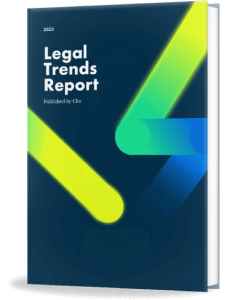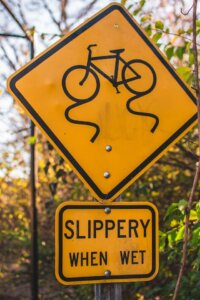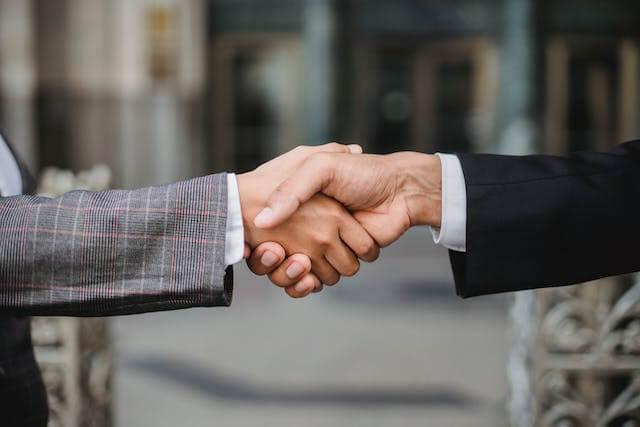Even with all the innovations and marvels of the modern world, one very human experience remains all too common—slipping, falling, and getting injured as a result. And, while slip and fall accidents often result in minor injuries, extremely serious and catastrophic injuries—even death—can also occur.
When a person is injured by a slip and fall on property owned or managed by another person, business, or government entity, they may be able to prove that the owner was liable for their injuries under the doctrine of premises liability. However, determining who is liable is not always a simple matter. Many factors will affect this determination, as we explore below.
Understanding Slip and Fall Accidents
Although the term “slip and fall” might conjure images of something akin to slipping on a banana peel, actual slip and falls encompass a wide variety of incidents. Nonetheless, we are still able to identify some common causes of slip and fall accidents and their consequences.
What is a Slip and Fall Accident?
“Slip and fall” generally refers to any accident where a person slips, falls, and suffers injury. This could also refer to a person tripping and falling, or “trip and fall”, although “slip and fall” serves as a catchall phrase for these types of accidents. Other forms of accidents, such as falling down stairs or from a height, are also often included under this umbrella.
Common Causes of Slip and Fall Accidents
Slip and fall accidents can be caused by dangerous conditions in the area where the fall took place. Some common hazards that lead to slips and falls include the following:
- Spilled substances on the floor or ground, such as liquids, foods, or wax;
- Uneven surfaces;
- Broken or missing handrails;
- Wet floors or stairs;
- Rain, sleet, ice, or snow on walkways;
- Poor lighting;
- Loose or damaged flooring or carpeting;
- Items in the walkway, such as cords, machinery, trash, or debris; and
- Cracked or broken floors, sidewalks, or pavement.
Any of the above hazards may give rise to a case for premises liability.
Consequences of Slip and Fall Accidents
In the best-case scenario, a slip and fall accident results in nothing more than an inconvenience and some momentary embarrassment. Or, the injuries suffered could amount to no more than bumps, bruises, or scrapes. However, tragic injuries often result, including the following:
- Bone fractures;
- Face and eye injuries;
- Back and spinal cord injuries;
- Head, neck, and shoulder injuries;
- Strained or torn muscles or ligaments;
- Internal injuries; and
- Traumatic brain injuries.
In the most severe cases, these injuries could lead to death. In non-death cases, the victim will have to contend with medical treatment, possibly lost work time, expenses, and perhaps a diminished standard of living on either a temporary or permanent basis.
Determining Liability in Slip and Fall Cases
When slips and falls result in serious injuries, the question becomes whether another person or entity can be found legally liable for those injuries. The general basis for slip and fall cases is premises liability, so we first need to understand this type of liability and how slip and fall cases are proven.
Basics of Premises Liability
Premises liability refers to liability for injuries resulting from dangerous conditions on property the defendant owns or controls. This liability could arise from incidents other than slip and falls. For example, a person injured by a crime or violent attack on commercial property could sue the property owner for inadequate security or lighting. However, slip and falls are the most common type of premises liability claim.
In most U.S. states, property owners owe a duty of reasonable care to those who enter their property. This means the owner must prevent or correct dangerous conditions on their property, or at least warn visitors of those conditions.
Proving Negligence in Slip and Fall Cases
Once you have established that a person’s accident and injuries were caused by a dangerous condition on a property (and that the property owner or occupier owed the injured person a duty of care), you must establish causation—that is, that the property owner’s negligence caused the injured person’s injuries. This will require proving:
- The owner knew, or should have known, of the dangerous condition; and
- The owner had a reasonable opportunity to either remove or correct the condition, or warn of the hazard, and failed to do so.
While we have been referring to the property owner only, it bears emphasis that the liable person could be the property occupier who does not necessarily own the property. An example would be a restaurant or retail establishment where the premises are rented and controlled by the renter.
Factors Affecting Slip and Fall Liability
One major factor in most slip and fall cases is how long the hazardous condition existed before the accident. The more advance notice the owner or occupier had of the condition, the greater the chance they could have corrected it or provided a warning.
Another common issue is the plaintiff’s duty to exercise reasonable care on their own behalf. We all have some duty to watch where we are going and take reasonable precautions while navigating another person’s property.
In the minority of states that follow the doctrine of contributory negligence, a plaintiff who is even partially responsible for their accident cannot recover anything. In states following the majority doctrine of comparative negligence, a percentage of fault may be attributed to the plaintiff, and their recovery is reduced by that percentage.
Compensation for Slip and Fall Injuries
Slip and fall victims can potentially recover compensation for their medical expenses and much more, depending on the circumstances. The following types of damages are recoverable in slip and fall cases:
- Medical expenses—past, present, and future;
- Past and future lost wages;
- Diminished earning capacity;
- Current or future care costs;
- Pain and suffering;
- Emotional distress; and
- Diminished enjoyment of life.
One major factor determining the amount of compensation is the extent of the injuries and how their impact on the person’s ability to work and their daily routines. This is where a slip and fall lawyer can help their client evaluate the case properly, along with the potential recoverable damages.
Statute of Limitations for Slip and Fall Claims
The time limit for filing a slip and fall lawsuit is governed by the personal injury statute of limitations (SOL) for the state where the accident took place. In the U.S., this SOL ranges from one year to six years, with most states having a deadline of two or three years. The SOL generally starts running on the date of the accident.
There are common exceptions to these strict deadlines imposed by SOLs, although the exceptions also vary by state. One exception in a majority of states is that, if the injured party is a minor, the SOL does not begin running until they reach the age of majority. A similar exception often applies to victims who are legally incapacitated or incompetent—the SOL does not begin running until their capacity or competence is restored.
If the slip and fall lawsuit is filed after the SOL deadline has expired, the property owner or occupier will almost certainly seek to have the case dismissed. Without any applicable exception to the SOL, the court will grant the dismissal. Blowing an SOL deadline is not a mistake any plaintiff’s attorney wants to make, so always be mindful of the applicable filing deadline for your slip and fall case.
Implement the Right Technology for Slip and Fall Lawsuits
A personal injury firm handling a slip and fall lawsuit will have to deal with many tasks beyond court deadlines and filings. These tasks might include managing medical records and tracking fees, expenses, and medical liens. In addition, the firm will need to quickly make comprehensive settlement calculations during settlement negotiations.
Clio’s case management software for personal injury firms handles all of these functions, as well as providing a centralized location for client work for the entire life of the case so lawyers can better support their clients, win cases, and get paid faster.
Note: The information in this article applies only to US practices. This post is provided for informational purposes only. It does not constitute legal, business, or accounting advice.




